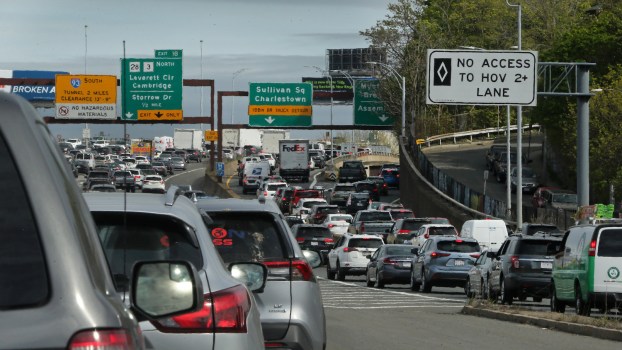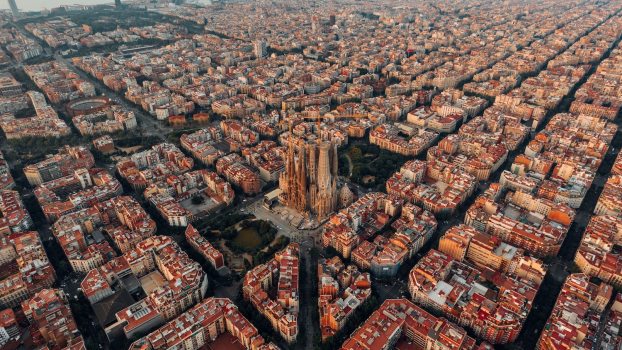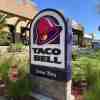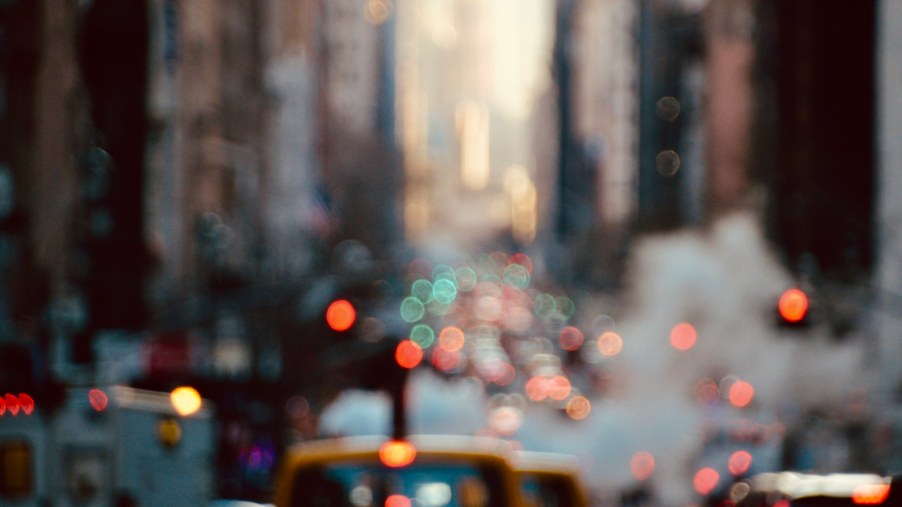
The U.S. City With the Fewest Cars Somehow Still Has the Worst Traffic
Here’s an interesting puzzle: New York City has fewer cars per capita than any other U.S. city. But a recent traffic index ranked NYC with the worst traffic in the U.S. Here’s what “worst traffic” actually means and how some cities in Europe have already fixed Manhattan’s biggest problem.
TomTom is a company that is known for selling a standalone GPS unit. But now that we use our phones for navigation, TomTom is pivoting to offer maps and traffic information as well. Its yearly traffic index uses several factors to calculate the worst traffic in the country.
The company calculated time lost to rush hours, CO2 emissons per mile, and how long it would take to travel six miles. It also looked at the percentage of streets which are congested, average overall speed, travel time of the average commuter, and whether the situation got better or worse since last year.
Some of the worst-rated cities have been struggling to fit modern cars onto narrow, medieval streets. Londan, Dublin, and Milan all landed in the top five. Some cities in developing countries appear to struggle to adjust to recent growth and keep travel times down. Lima, Peru; Bengaluru, India; Pune, India; Bucharest, Romania; Manila, Phillippines; Taichung, Taiwan; and Mexico City all made the top fifteen.
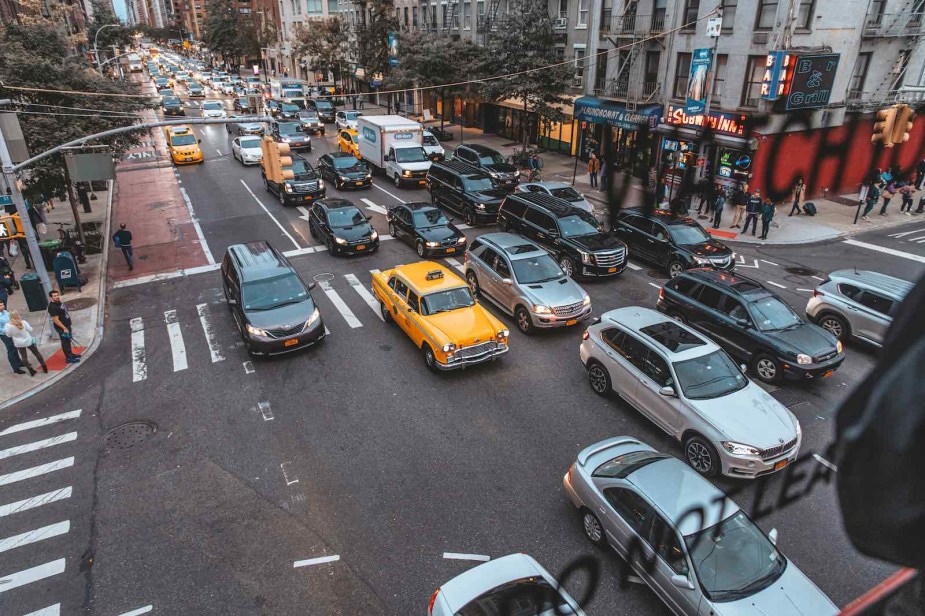
On a global scale, New York City’s #20 rank isn’t horrible. But it is by far the worst in the U.S. NYC residents will tell you traffic is no joke. Drivers in the city that never sleeps lose 112 hours per year to rush hours. The average rush hours speed is a measly 12.4 miles per hour. That’s slower than rush hour in Tokyo and Jakarta, Indonesia.
If you’re thinking of getting a car in New York City, know that the average six mile commute will take you almost 25 minutes. That’s because 43% of the streets are congested. And to top it off, traffic in New York is getting worse year-over-year.
Owning a car in New York is not cheap. In some parts of Manhattan you’ll pay $600 a month for an average parking space. New York is even pioneering speed cameras with microphones to automatically ticket vehicles that are too loud.
It’s not shocking that many New Yorkers don’t have a car. I imagine only residents with a ton of money or who desperately need a vehicle still own one. What surprises me is that this metro area has fewer cars per capita than any other city in the U.S.–and it still has the worst traffic. What does that tell us? That just fewer cars is not solving the problem.
I’m not all doom and gloom. Some forward-looking cities have found traffic solutions. And New York City is uniquely suited to implement some of them.
You won’t see Barcelona, Spain anywhere on TomTom’s 380 city list of the worst traffic. This despite the fact that the Barcelona metro area has nearly six million residents, and car ownership is on the rise. In 2015 Barcelona had 361 cars for every 1,000 residents and that number was increasing. At the same time New York was down to 230 cars per 1,000 residents, but that number was dropping.
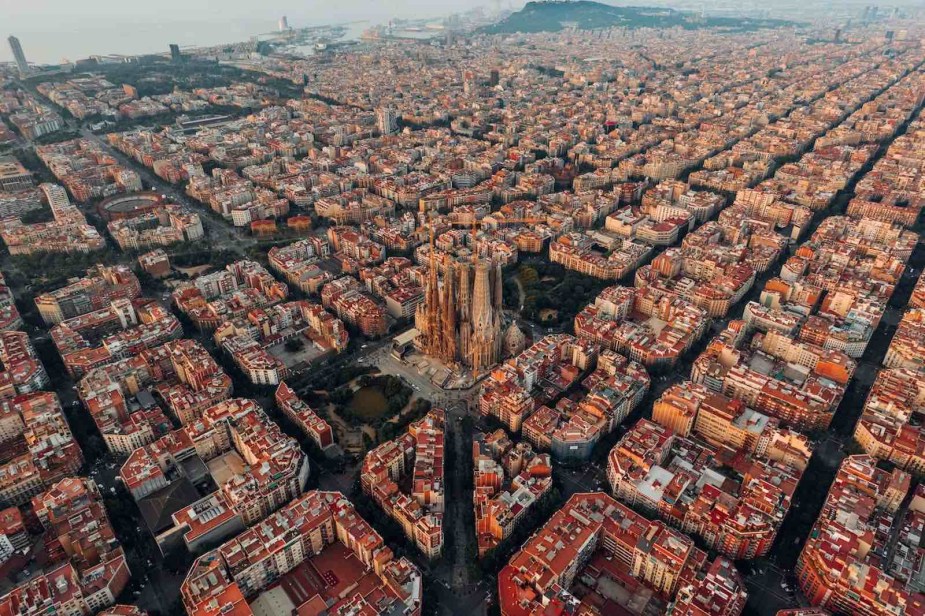
So what in the world is Barcelona doing right? In the late 1800s, one of the world’s first urban planners completely redesigned the city, and Barcelona has stuck to his original plan. Ildefons Cerdà Sunyer actually coined the term “suburban.” He knew some mode of transportation was coming that would need more room than horses. So he widened the streets into boulevards and established a uniform block size. He also abolished the idea of a hub-and-spoke layout around a city center. He urged Barcelona to instead repeat certain resources–such as hospitals and schools–at intervals throughout the city’s grid. Manhattan and New York have more in common with this layout than they do with cities such as Paris and Boston.
After the adoption of the automobile, Barcelona made a few other key changes. It organized the city into super blocks (called Superillas in Spanish) which were 3×3 squares of smaller blocks. It established wide, one-way boulevards engineered for rapid automotive travel running between these Superillas. At each corner of each Superillas is a huge, underground parking garage. The streets inside the Superillas are small one-way boulevards with very low speed limits, or even pedestrian-only walkways.
What’s the result? On a recent trip to Barcelona I was amazed how quickly I could drive from one end of town to the other. I could always find parking within two blocks of my final destination (though usually underground). Walking on the tree-lined city streets was always pleasant and I felt safe from traffic.
If New York adopted a more Barcelona-like city plan it could reduce traffic times and congestion, while making the city more pleasant for pedestrians and bikers. Barcelona proves that there really is room for all of us.
Next, find out why the state with the worst road rage problem is also the least charitable, or see Barcelona’s layout for yourself in the video below:
